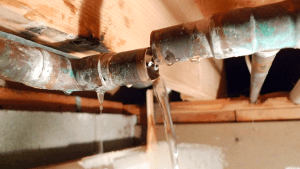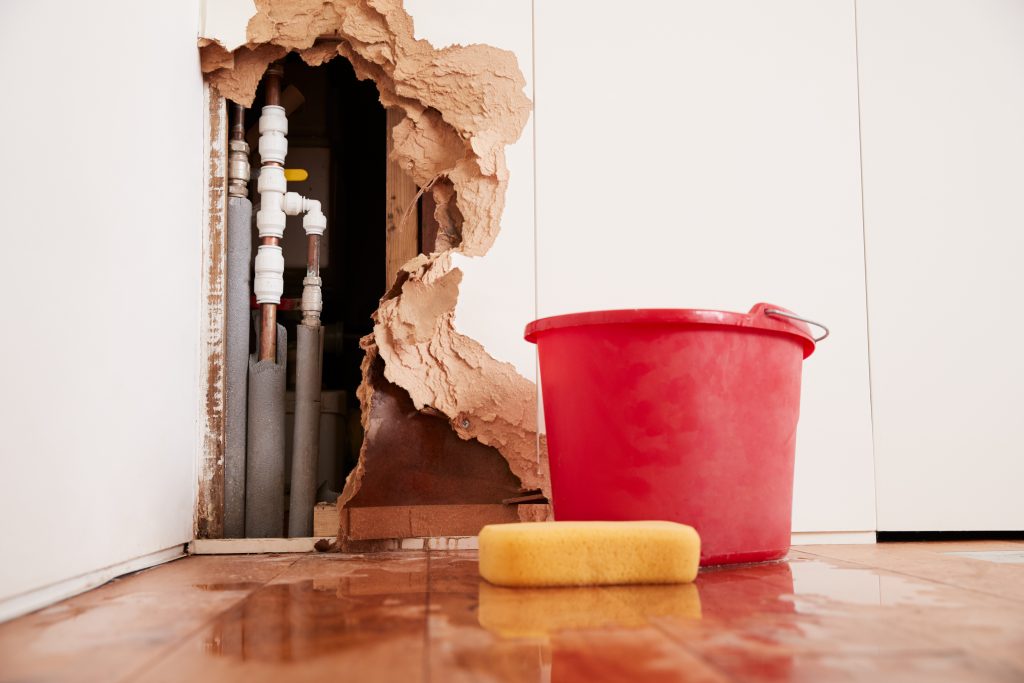Detecting Secret Water Line Leaks: Six Useful Detection Methods
Detecting Secret Water Line Leaks: Six Useful Detection Methods
Blog Article
The content listed below involving Hacks to detect leaks is exceedingly stimulating. Read it yourself and decide what you think of it.

Early detection of leaking water lines can minimize a possible calamity. Some tiny water leaks may not be visible.
1. Take A Look At the Water Meter
Checking it is a guaranteed way that assists you uncover leaks. If it moves, that suggests a fast-moving leakage. This suggests you may have a sluggish leakage that can even be below ground.
2. Inspect Water Usage
Examine your water bills and track your water usage. As the one paying it, you should notice if there are any kind of disparities. If you detect sudden changes, regardless of your consumption coinciding, it suggests that you have leakages in your plumbing system. Keep in mind, your water costs should drop under the very same variety each month. An unexpected spike in your bill shows a fast-moving leakage.
A stable boost every month, even with the very same behaviors, shows you have a sluggish leak that's likewise gradually escalating. Call a plumber to thoroughly check your property, especially if you feel a cozy location on your flooring with piping below.
3. Do a Food Coloring Examination
When it comes to water intake, 30% comes from commodes. If the shade in some way infiltrates your dish throughout that time without flushing, there's a leakage in between the tank and bowl.
4. Asses Exterior Lines
Don't forget to check your outdoor water lines also. Should water leak out of the connection, you have a loosened rubber gasket. One little leakage can squander lots of water as well as spike your water expense.
5. Check and Analyze the Scenario
Homeowners need to make it a habit to examine under the sink counters as well as also inside cabinets for any kind of bad odor or mold development. These two red flags show a leakage so timely focus is required. Doing regular inspections, even bi-annually, can conserve you from a major issue.
Extra importantly, if you understand your residence is already old, keep a watchful eye on your heating units, tubes, pipelines etc. Look for stainings and also compromising as most pipes and home appliances have a life expectancy. They will certainly additionally normally degrade because of deterioration. Do not wait for it to intensify if you presume leaking water lines in your plumbing system. Call a specialist plumber immediately so you don't end up with a dreadful mess in your house.
Early detection of dripping water lines can alleviate a prospective disaster. Some little water leaks may not be visible. Checking it is a proven method that helps you uncover leaks. One little leak can lose lots of water as well as increase your water bill.
If you think dripping water lines in your plumbing system, don't wait for it to intensify.
WARNING SIGNS OF WATER LEAKAGE BEHIND THE WALL
PERSISTENT MUSTY ODORS
As water slowly drips from a leaky pipe inside the wall, flooring and sheetrock stay damp and develop an odor similar to wet cardboard. It generates a musty smell that can help you find hidden leaks.
MOLD IN UNUSUAL AREAS
Mold usually grows in wet areas like kitchens, baths and laundry rooms. If you spot the stuff on walls or baseboards in other rooms of the house, it’s a good indicator of undetected water leaks.
STAINS THAT GROW
When mold thrives around a leaky pipe, it sometimes takes hold on the inside surface of the affected wall. A growing stain on otherwise clean sheetrock is often your sign of a hidden plumbing problem.
PEELING OR BUBBLING WALLPAPER / PAINT
This clue is easy to miss in rooms that don’t get much use. When you see wallpaper separating along seams or paint bubbling or flaking off the wall, blame sheetrock that stays wet because of an undetected leak.
BUCKLED CEILINGS AND STAINED FLOORS
If ceilings or floors in bathrooms, kitchens or laundry areas develop structural problems, don’t rule out constant damp inside the walls. Wet sheetrock can affect adjacent framing, flooring and ceilings.
https://www.servicemasterbyzaba.com/blog/how-to-detect-water-leakage-in-walls/

As a fervent person who reads about Top leak detection hacks, I was thinking sharing that article was worthwhile. Enjoyed our posting? Please share it. Help someone else discover it. Thanks so much for taking the time to read it.
Problem? Contact now! Report this page